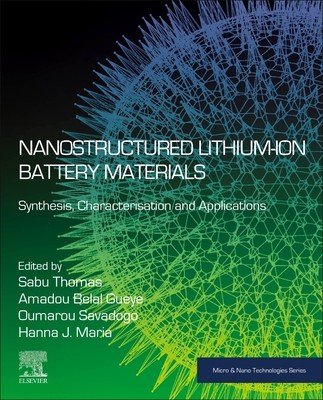
- We will send in 10–14 business days.
- Publisher: Elsevier
- ISBN-10: 0443133387
- ISBN-13: 9780443133381
- Format: 19.1 x 23.5 x 3.4 cm, minkšti viršeliai
- Language: English
- SAVE -10% with code: EXTRA
Nanostructured Lithium-Ion Battery Materials (e-book) (used book) | bookbook.eu
Reviews
Description
Nanostructured Lithium-ion Battery Materials: Synthesis and Applications provides a detailed overview of nanostructured materials for application in Li-ion batteries, supporting improvements in materials selection and battery performance. The book begins by presenting the fundamentals of Lithium-ion batteries, including electrochemistry and reaction mechanism, advantages and disadvantages of Li-ion batteries, and characterization methods. Subsequent sections provide in-depth coverage of a range of nanostructured materials as applied to cathodes, electrolytes, separators, and anodes. Finally, other key aspects are discussed, including industrial scale-up, safety, life cycle analysis, recycling, and future research trends. This is a valuable resource for researchers, faculty, and advanced students across nanotechnology, materials science, battery technology and energy storage, chemistry, applied physics, chemical engineering, and electrical engineering. In an industrial setting, this book is of interest to scientists, engineers, and R&D professionals working with advanced materials for Li-ion batteries and other energy storage applications.
EXTRA 10 % discount with code: EXTRA
The promotion ends in 21d.20:13:42
The discount code is valid when purchasing from 10 €. Discounts do not stack.
- Publisher: Elsevier
- ISBN-10: 0443133387
- ISBN-13: 9780443133381
- Format: 19.1 x 23.5 x 3.4 cm, minkšti viršeliai
- Language: English English
Nanostructured Lithium-ion Battery Materials: Synthesis and Applications provides a detailed overview of nanostructured materials for application in Li-ion batteries, supporting improvements in materials selection and battery performance. The book begins by presenting the fundamentals of Lithium-ion batteries, including electrochemistry and reaction mechanism, advantages and disadvantages of Li-ion batteries, and characterization methods. Subsequent sections provide in-depth coverage of a range of nanostructured materials as applied to cathodes, electrolytes, separators, and anodes. Finally, other key aspects are discussed, including industrial scale-up, safety, life cycle analysis, recycling, and future research trends. This is a valuable resource for researchers, faculty, and advanced students across nanotechnology, materials science, battery technology and energy storage, chemistry, applied physics, chemical engineering, and electrical engineering. In an industrial setting, this book is of interest to scientists, engineers, and R&D professionals working with advanced materials for Li-ion batteries and other energy storage applications.


Reviews